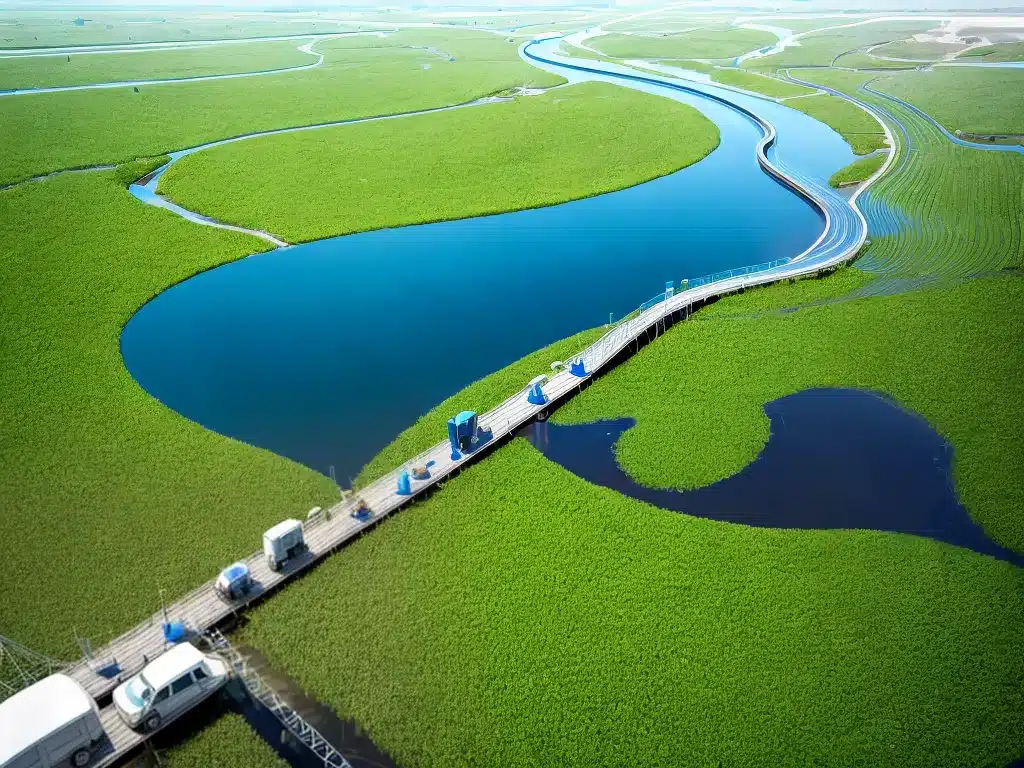
Water Management with IoT: Trends for 2024
The Internet of Things (IoT) is transforming water management and enabling more efficient and sustainable use of our precious water resources. As we move into 2024, here are some of the key trends in using IoT for water management that I foresee:
More Widespread Deployment of Smart Water Meters
Smart water meters that connect to the Internet are being deployed in homes and businesses at a rapid pace. By 2024, smart water meters will likely be the norm in developed countries. These IoT devices enable:
- Real-time monitoring of water usage and leaks
- Early leak detection, avoiding water wastage
- Consumer engagement through water usage alerts and dashboards
- Dynamic pricing based on supply and demand
Smart meters also generate huge amounts of data to better understand water usage patterns and optimize water distribution.
Advanced Sensors for Water Quality Monitoring
New sensors leveraging IoT connectivity are enabling real-time monitoring of water quality in reservoirs, rivers, lakes and along supply networks.
- Sensors can track parameters like pH, temperature, turbidity, chlorine and mineral levels.
- This allows early detection of contamination so that prompt action can be taken.
- Sensors also enable digitized, large-scale water quality monitoring that was not possible before.
In the future, we may even see crowdsourced water quality monitoring using consumer IoT devices.
AI for Leakage Detection and Preventive Maintenance
Artificial intelligence (AI) is being applied to the massive amounts of data from smart water devices to better manage water distribution systems.
- AI algorithms can identify anomalies in flow rates or pressure changes to detect leaks and prioritize maintenance.
- Predictive maintenance prevents pipe bursts and improves health of aging water infrastructure.
- Overall, AI enables more proactive and efficient water network management.
As AI and IoT converge, I expect predictive capabilities to become a lot more powerful.
Cloud and Edge Computing for Real-Time Decision Making
IoT deployments in the water sector are increasingly turning to cloud computing platforms as well as edge computing capabilities.
- Cloud platforms enable aggregating and analyzing huge quantities of data from IoT devices.
- Edge computing allows time-sensitive decisions to be made locally, improving response times.
- Together, they facilitate data-driven, real-time decision making for water network operators.
As 5G networks proliferate, edge computing will open up new possibilities like remote control of valves.
Blockchain for Enhanced Data Security and Smart Contracts
Blockchain is an emerging technology that is well suited to address some of the challenges around IoT and water management.
- Blockchain provides tamper-proof data from IoT sensors through its distributed ledger architecture.
- Smart contracts enabled by blockchain allow automated implementation of actions like closing valves or issuing usage alerts based on sensor data.
- Overall, blockchain enhances cybersecurity and autonomy of IoT systems.
I expect more pilot projects in the water sector to demonstrate blockchain’s capabilities. Regulation and standardization will be key for adoption.
Growth of IoT Analytics and Platforms
Dedicated IoT platforms tuned for the water sector are gaining traction. Companies like TaKaDu provide holistic solutions that include sensors, cloud analytics and optimization tools tailored to water utilities.
- Specialized analytics help convert raw IoT data into actionable insights and direct operational recommendations.
- Integrated IoT platforms help water managers maximize value from smart water initiatives.
As platforms mature, I foresee them playing an integral role in any large-scale implementation of smart water IoT.
The application of IoT in the water sector is still in early phases, and we are likely to see many new innovations. But it is clear that IoT is rapidly transforming water management, improving efficiency, quality and accessibility. Integrating IoT with other emerging technologies will be the key to overcoming water challenges as we advance.












